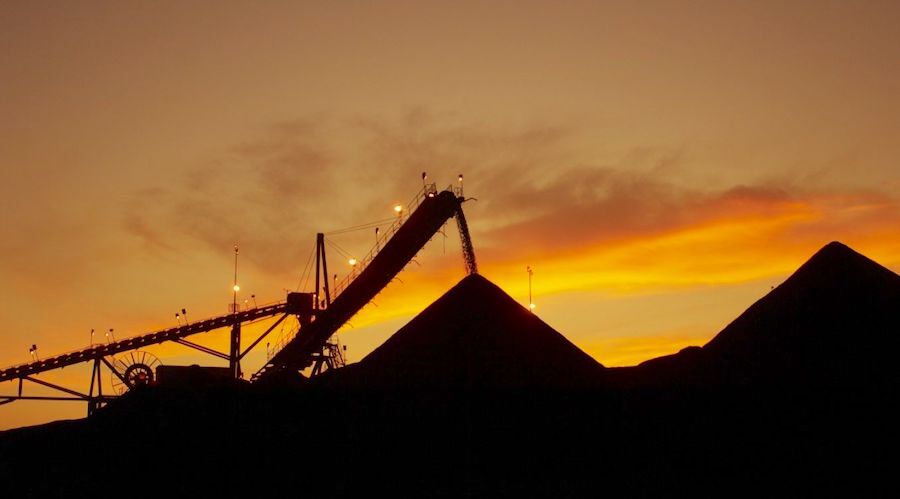Column: China’s renewed appetite for Australian coal disrupts Asia flows

China’s renewed appetite for Australian coal after Beijing ended its unofficial ban on imports, coupled with strong overall demand for the fuel used to generate power, is forcing a realignment of seaborne flows in Asia.
China’s total coal imports have soared this year, with customs data released on Aug. 8 showing July imports at 39.26 million metric tons, level with June’s 39.87 million but up a massive 66.9% from the same month last year.
For the first seven months of the year, the world’s biggest coal importer saw arrivals of 261.18 million metric tons, up 88.6% from the same period in 2022.
This figures includes all grades of coal, but the lion’s share is made up of thermal coal, used primarily to generate electricity, as China is largely self-sufficient in coking coal for steel-making, and what it does import comes mainly overland from neighbouring Mongolia.
China’s imports of thermal coal were estimated at 29.0 million metric tons in July by commodity analysts Kpler, up from 27.61 million in June and the second strongest month so far this year.
The Kpler data shows that China’s imports of thermal coal started to strengthen from March onwards, and it’s not just coincidence that this was after the unofficial ban on shipments from Australia ended.
Beijing had imposed the restriction on imports from Australia, the world’s second-biggest exporter of thermal coal behind Indonesia, in mid-2020 as part of a series of trade measures that followed rising diplomatic tensions over Canberra’s call for an international investigation into the origins of the Covid-19 pandemic.
Australia’s election last year of the centre-left Labor Party to replace the conservative Liberal-National coalition allowed for a reset of relations and so far Beijing has ended its restrictions on coal and lifted tariffs on barley.
China’s imports of thermal coal from Australia went from zero in December last year to 5.45 million metric tons in July, according to Kpler data.
Since April China’s imports of Australian thermal coal have been above 4.8 million metric tons per month, a level that was only reached three times in the period from January 2017 to September 2020.
With China returning to Australian coal, it has trimmed the volumes bought from Indonesia, with imports of thermal coal from the Southeast Asian nation coming in at 16.98 million metric tons in July, well below the peak for this year of 22.46 million in March.
China has also picked up imports of Russian thermal coal, with seaborne arrivals of more than 4.4 million metric tons in the three months to July, up from levels around 2.6 million in the prior three months.
China’s increased appetite for thermal coal from Australia and Russia has led to a shift in imports by India, the world’s second biggest coal buyer.

India shift
India’s imports of thermal coal from Australia in July were 613,080 metric tons, according to Kpler, and they have been below 1 million since March.
From December to February India’s imports of Australian thermal coal had been above 1 million metric tons per month, peaking in January at 1.79 million.
India’s imports of Russian thermal coal dropped to 709,849 metric tons in July, the lowest since February and about half of the peak so far in 2023 of 1.47 million in May.
In contrast India is turning back to thermal coal from Indonesia, with July arrivals of 6.87 million metric tons, up from 6.04 million in June.
For July, Indonesia’s share of India’s thermal coal imports was 63%, which was the highest since the 65% in April.
While the flows of thermal coal around Asia are once again shifting, it’s worth noting that prices have largely remained steady, indicating that the market remains more of less in balance.
China and India both generally import Australian thermal coal of a lower energy value than the traditional buyers of Japan, South Korea and Taiwan.
The 5,500 kilocalories per kg (kcal/kg) grade at Australia’s Newcastle port , as assessed by commodity price reporting agency Argus, ended at $86.14 a metric ton in the week to Aug. 4.
It has been in a narrow range around $86 a metric ton since the beginning of June, having steadily declined from its record high of $284.20 a metric ton, reached in March last year amid fears of energy shortages in the wake of Russia’s invasion of Ukraine.
The price of Indonesian coal with an energy content of 4,200 kcal/kg has also been steady in recent weeks, ending at $51.30 a metric ton in the week to Aug. 4, having traded in a narrow range around $52 since mid-June.
(The opinions expressed here are those of the author, Clyde Russell, a columnist for Reuters.)
(Editing by Shri Navaratnam)
{{ commodity.name }}
{{ post.title }}
{{ post.date }}

Comments